Winter can be a magical time for capturing breathtaking landscapes – with its serene snow-covered scenes and soft, diffused light. For novice photographers eager to explore this enchanting season, a few tips can help you make the most of your winter photography adventures. From camera settings to composition, here's how you can start the new year by elevating your winter landscape photography.
Discover beginner tips for winter landscape photography with Sony. Capture stunning scenes with expert advice on light, settings and gear.
1. Embrace The Light
Winter light is unique, with the sun sitting lower in the sky, creating long shadows and softer highlights. This is perfect for capturing the tranquil beauty of snowy landscapes. Aim to shoot during the golden hours—shortly after sunrise or before sunset—when the light is warm and the shadows are gentle. This will add depth and dimension to your photos, enhancing the natural beauty of the scene. The image below, taken by photographer Herve Rannu, is an excellent example of embracing the light in your winter landscape photography. Read more about how he captured this image in Behind The Shot: Revisiting A Special Scene In New Light.
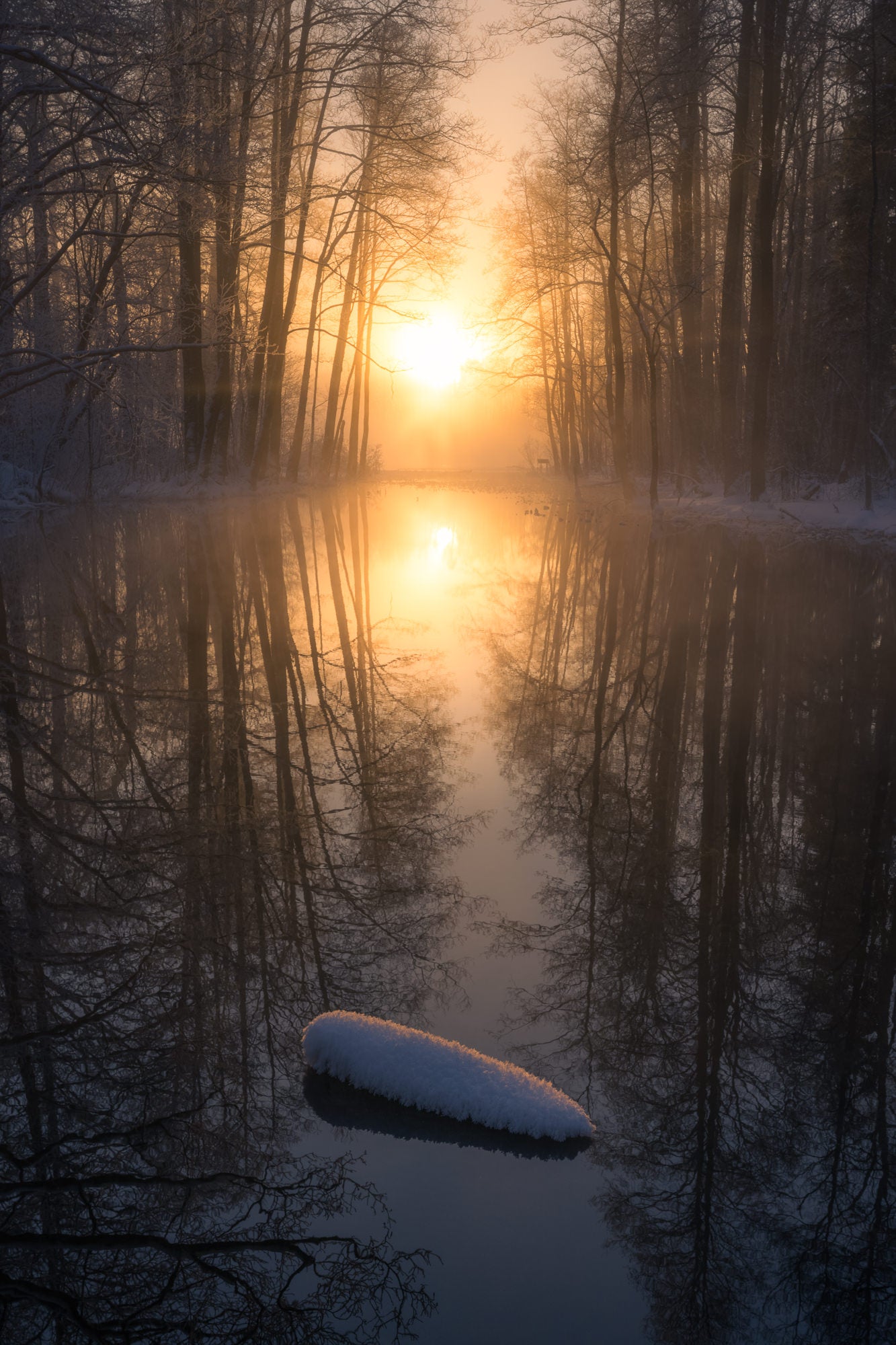
Photo by Herve Rannu. Sony Alpha 7R V. Sony 16-35mm f/4 G PZ. 1/200-sec., f/13, ISO 100
2. Dress For Success
Staying warm is key to enjoying your time outdoors and focusing on your photography. Layer up with thermal clothing, waterproof boots, and gloves that allow you to operate your camera. This will ensure you’re comfortable and ready to capture the perfect shot, no matter how long you’re out in the cold.
Alpha Collective member Rachel Jones Ross, who spends much of her time outside in the cold capturing the frozen landscapes of her home in the Canadian Rockies, shares her tip on how air is what keeps you warm. "Down is an excellent insulator because it puffs up and creates little pockets that trap the warm air from your body," she explains. "Dressing in layers is the key to staying warm. I wear a wool base layer (my favorite is from Patagonia.) I like fleece for a mid-layer and then my outdoor clothing as my outer layer. Avoid tight fitting clothing as it will restrict air movement and leave you vulnerable to the cold."
Sara Boychuk is an adventurous landscape and wedding photographer who is also based in the Canadian Rockies. She is frequently described as the “ice queen,” because her favorite landscapes are those found during the coldest months and in the harshest mountainous areas. The number one item she always includes in her bag? A beanie. "A beanie feels like a personal extension of my head at this point as I almost always have one," she says. "The alpine can be incredibly cold so I always like to have a hat in my bag." Learn more about her gear in What’s In My Bag: Two Zooms & Two Primes For Cold Weather Adventures.
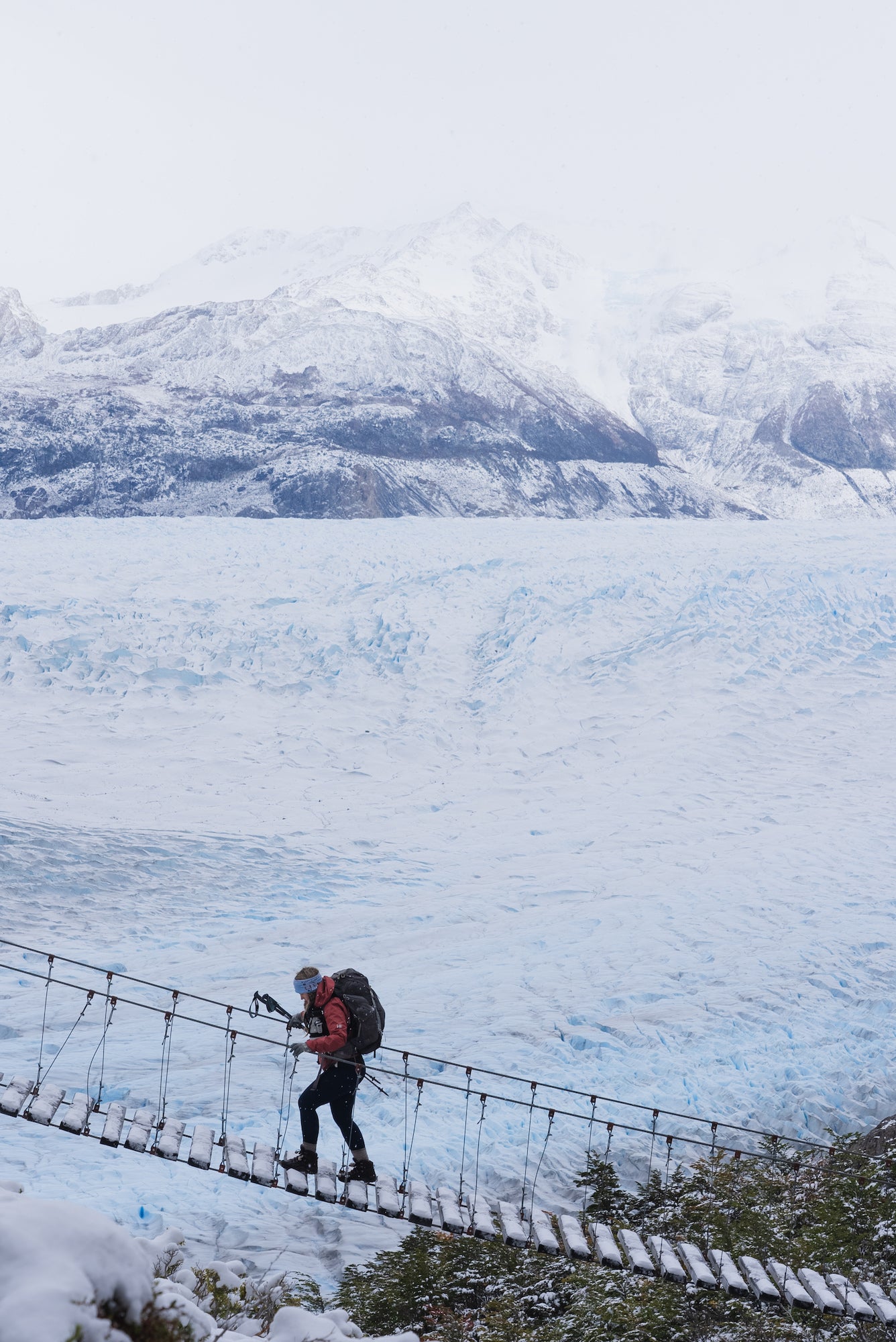
Photo by Sara Boychuk. Sony Alpha 7S III. Sony 24-105mm f/4 G. 1/320-sec., f/10, ISO 100
3. Use A Tripod
A sturdy tripod is essential for winter photography, especially when light levels are low. It helps prevent camera shake and allows you to take longer exposures, which can be particularly useful for capturing the silky flow of snow-blown winds or the serene stillness of a frozen lake. Make sure your tripod is stable on uneven, snowy ground by adjusting its legs and using spikes if available.
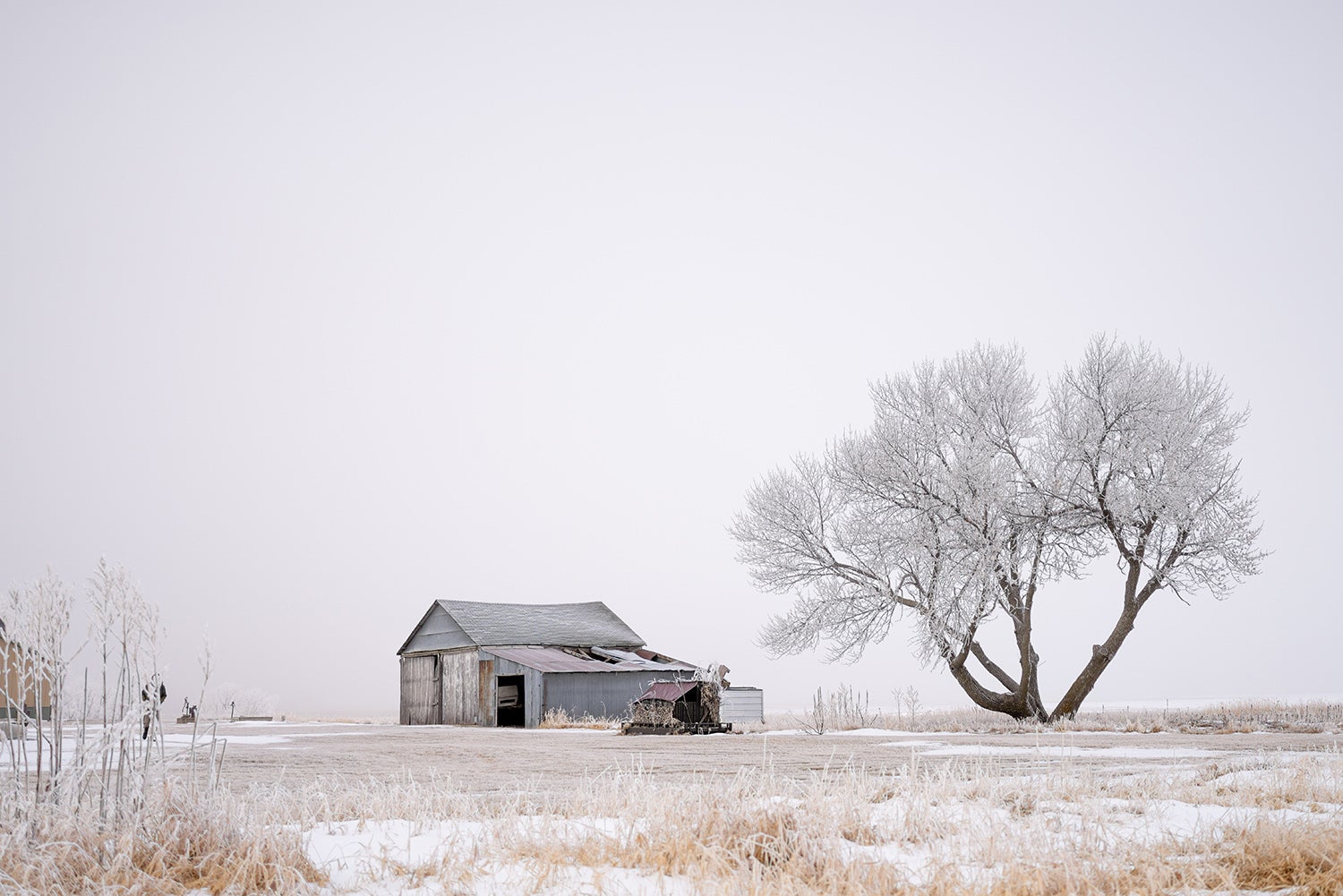
Photo By Caroline Jensen. Sony Alpha 7R IV. Sony 35mm f/1.4 G Master. 1/8000-sec., f/1.4, ISO 125
Some favorite tripods from Sony landscape photographers include the Slik ProCF 734 Legs with 200DQ Ballhead (Jess Santos), the Really Right Stuff Ascend 14L Carbon Fiber Travel Tripod & Ballhead (Brandt Ryder & Michael Simmons), the MeFoto Globetrotter S Carbon Fiber (Andrew Eggers) and the Manfrotto BeFree Advanced (Oscar Lindsey).
4. Experiment With Exposure
Snow can be tricky to photograph because it reflects so much light. This can lead to underexposed images where the snow looks gray rather than white. To avoid this, use your camera’s exposure compensation feature to slightly overexpose your shots. Start with +1 or +2 stops and adjust as needed until the snow appears bright and true to life.
Alpha Collective member Autumn Schrock, who has traveled all over the world capturing landscapes in the elements, says that she one key piece of gear that’s always in her bag is a good circular polarizing filter (CPL). "It allows you to capture effects in-camera rather than having to rely solely on post-processing to achieve the same effects. CPLs help to reduce reflections, remove haze, add contrast, and darken and saturate the sky. They can drastically alter an image, which saves time later on the computer."
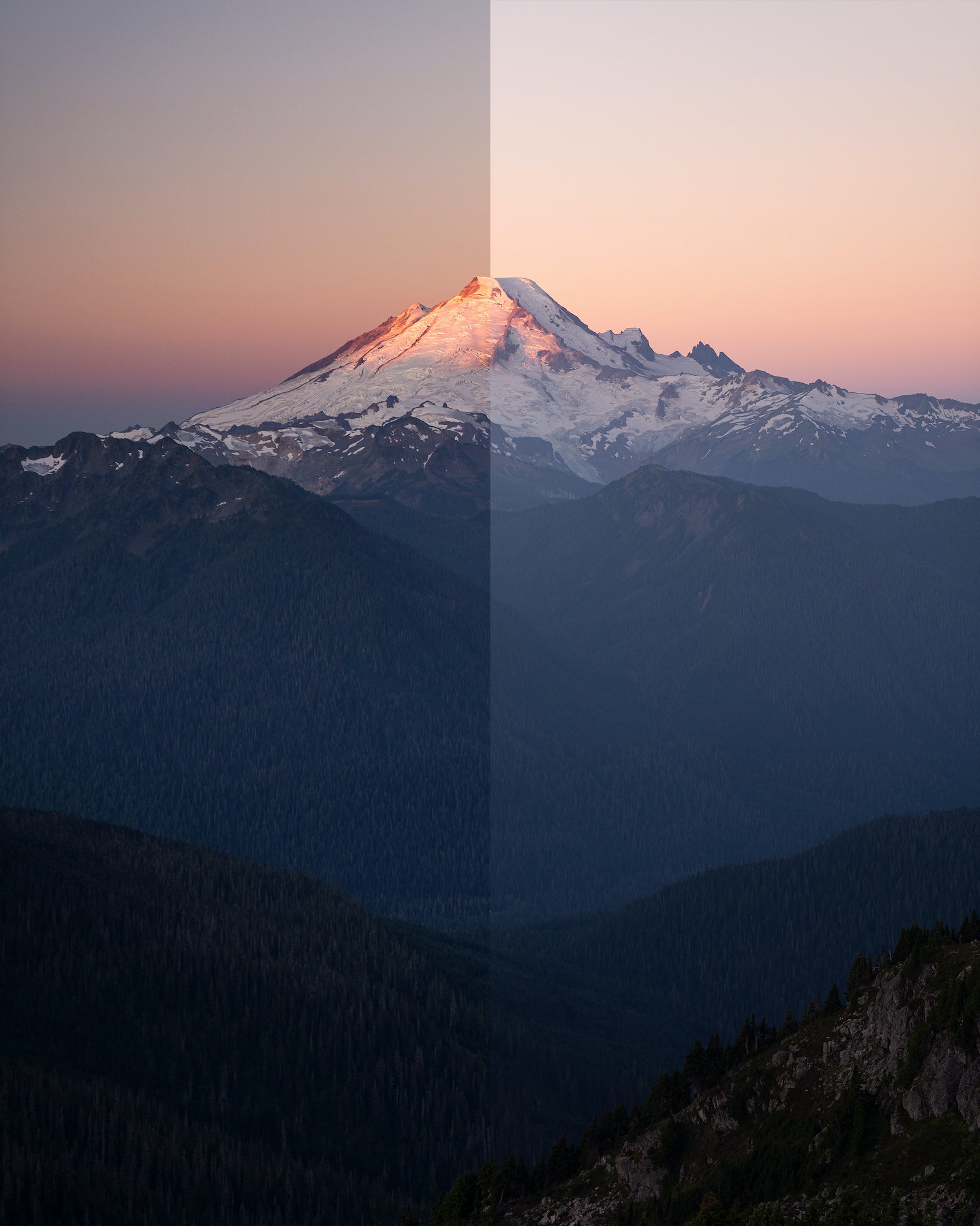
Filter/No Filter Split Photo by Autumn Schrock. Sony Alpha 7R III. Sony 24-70mm f/2.8 G Master. 1/160-sec., f/2.8, ISO 320
5. Leverage Your Sony Gear
Sony cameras are equipped with features that make winter photography a breeze. For instance, the Sony Alpha 7 IV offers an excellent dynamic range and weather-sealed body, perfect for capturing the nuances of winter light while withstanding the elements. Use its in-body image stabilization to keep your shots sharp, even when handholding in less-than-ideal conditions. If you want to step up your resolution even more, the ultra-high resolution Sony Alpha 7R V is one of the best choices for landscape photographers. It combines 61 megapixel resolution and broad dynamic range that is ideal for capturing the intricate details in a scene.
Pairing your camera with a wide-angle zoom like the Sony 16-35mm f/2.8 G Master II or Sony 24-70mm f/2.8 G Master II will allow you to capture those grand vistas that make for breathtaking landscape images. The first generation of these lenses – the Sony 16-35mm f/2.8 G Master or Sony 24-70mm f/2.8 G Master are also a great choice for beginners. Find even more of the best lenses for landscape photography in 8 Lenses That Can Up Your Landscape Photography Game.
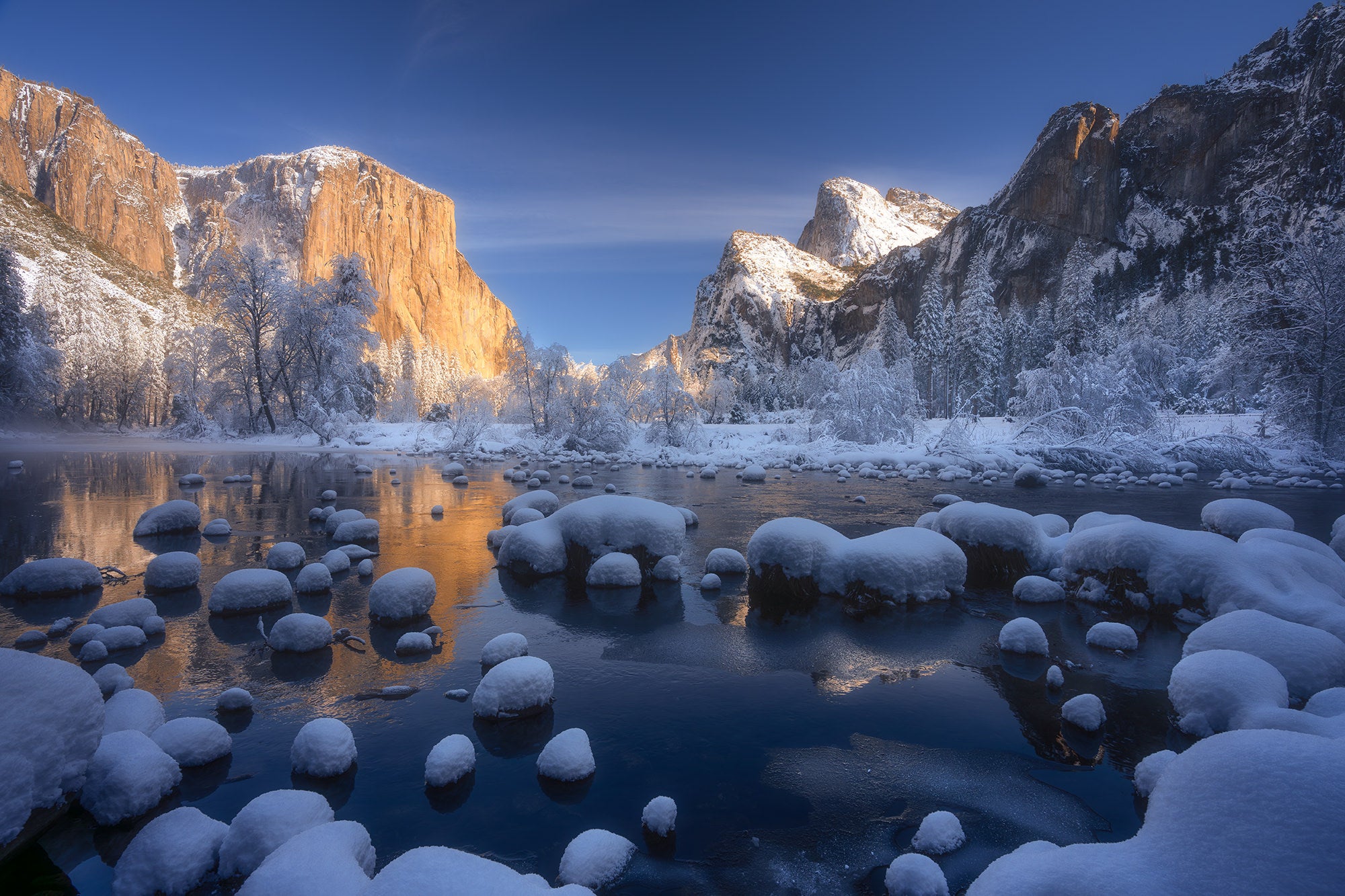
Photo by Sapna Reddy. Sony Alpha 1. Sony 16-35mm f/2.8 G Master. 1/40-sec., f/16, ISO 100
6. Focus On Composition
Winter landscapes offer unique opportunities for composition, with stark contrasts and minimalist scenes. Look for leading lines created by fences, roads, or tree lines that draw the viewer’s eye into the frame. Pay attention to patterns in the snow, like footprints or the texture of ice, to add interest and depth to your images.
Alpha Collective member Tiffany Nguyen, who is known for her powerful travel and landscape photgraphy, likes to focus on getting her composition right in-camera so she can take full advantage of everything in the frame. “I personally try to nail the composition in-camera when I’m out shooting in the field so that there’s less work for me to do in post,” she says.
To get that composition just right in-camera, she uses the rule of thirds and turns on a certain setting on her camera to help her do so. “When you’re shooting, it’s really helpful to have grid lines on your camera,” she says. “So I would definitely recommend going to your menu in your settings to turn on your grid lines. A lot of times when you’re shooting naturally you won’t even have to think about it and I think that some of the best shots use the rule of thirds. Sometimes people think you have to place your subject in the center, but oftentimes I think placing your subject in the third of a photo can actually be more powerful than placing them in the center.”
7. Protect Your Camera & Lens
Cold temperatures can affect your camera’s performance, so it’s important to protect it from the elements. Use a camera bag that’s insulated and waterproof, and consider using a lens hood to shield your lens from snow and moisture. When moving from the cold outdoors to a warm indoor environment, place your camera in a plastic bag to prevent condensation from forming on the lens and internal components.
Rachel Jones Ross also says to check your lens and camera regularly for frost buildup. "A bit of frost will not hurt your gear," she explains, "however, it will cause a haze on your image. To remove it, use a simple, plain air blower before reaching for a lens cloth; you are likely to melt the frost from the warmth of your fingers with the cloth, then smear water across the lens (which then freezes!). And never use your breath to try to clean or wipe a lens! You can prevent frost from forming on the body of your camera and lens by using a rain sleeve. Any rain sleeve will work; I use the cheap plastic ones. You can also prevent frost on the front lens element with lens warmers."
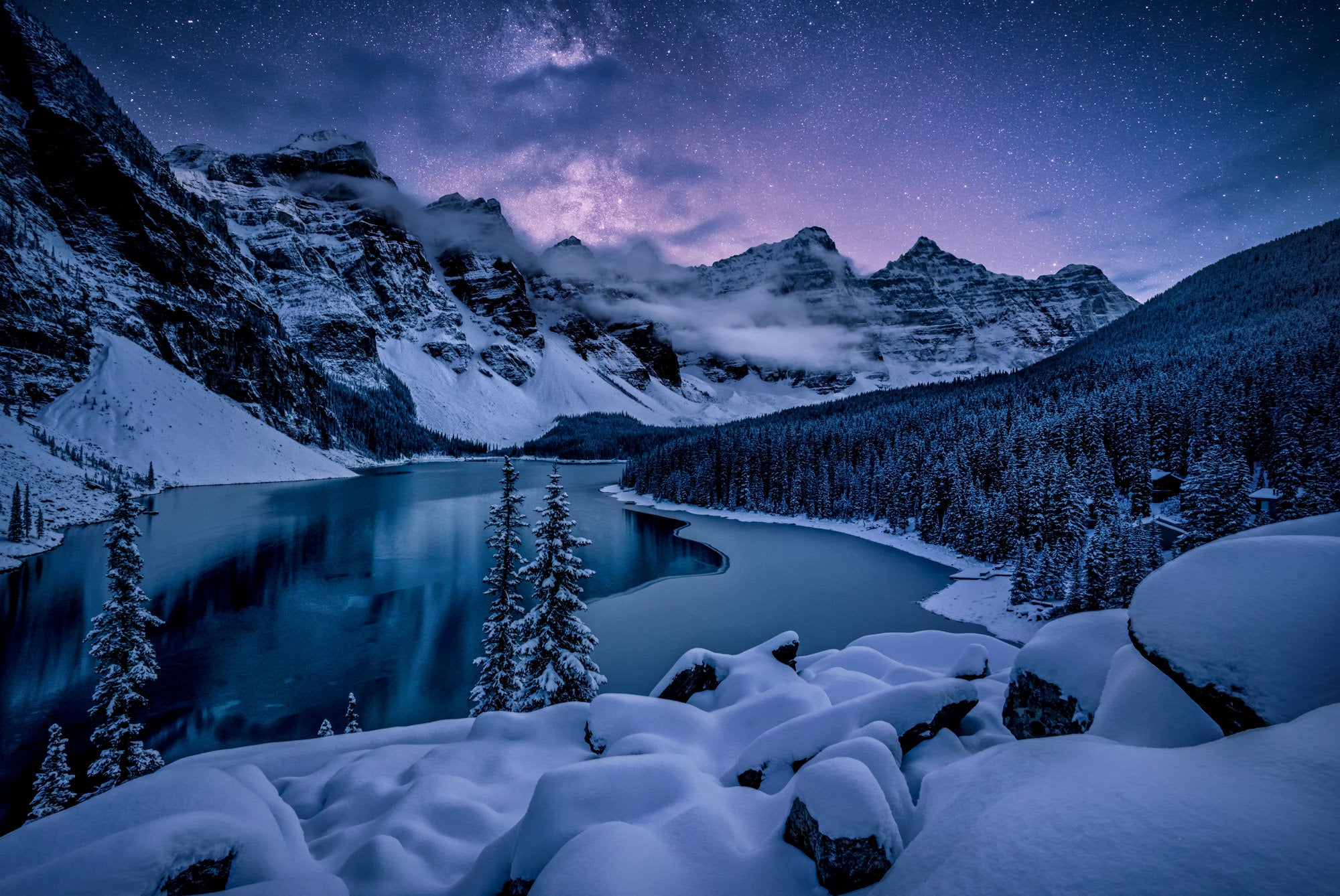
Photo by Rachel Jones Ross.
She says it's also important to keep your camera batteries warm. "Your batteries will have a longer life in the field if you carry them in a jacket pocket, rather than your backpack. You can also put a chemical warmer in your pocket next to your battery for a little extra warmth."
8. Capture Details
While wide, sweeping landscapes are stunning, don’t forget to capture the smaller details that make winter unique. Focus on the delicate patterns of frost on a window, the intricate designs of snowflakes, or the vibrant colors of winter berries against a snowy backdrop. These details can add a personal and intimate touch to your winter photography portfolio. An excellent example is in this image below, taken by nature and macro photographer Kristine of Macro Viewpoint with her Sony Alpha 7 IV and Sony 90mm f/2.8 Macro G. Make sure you check out more of her images for great examples of capturing the details in winter photography.
By following these beginner tips and utilizing your Sony gear, you’ll be well on your way to capturing stunning winter landscapes. So bundle up, head outside, and let the beauty of the season inspire your photography.

